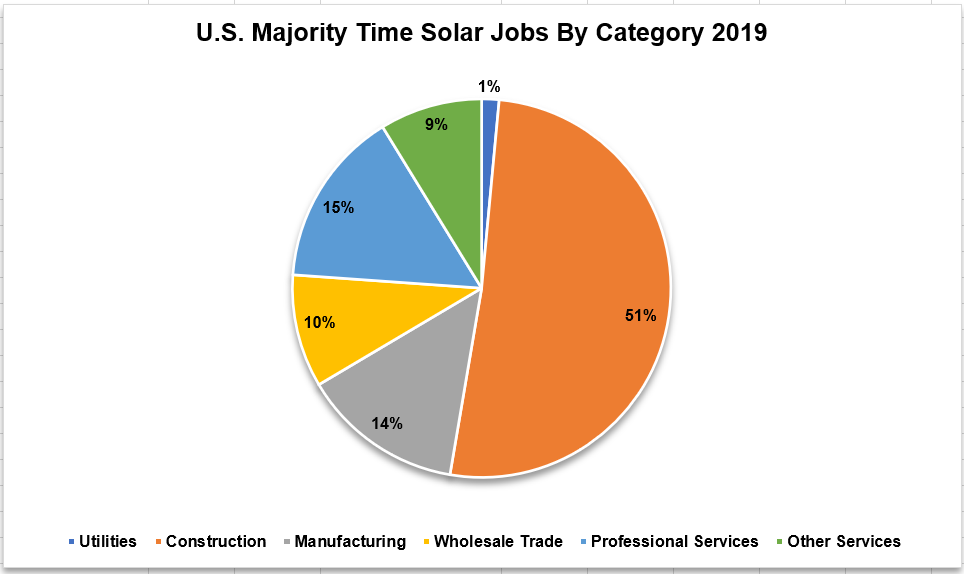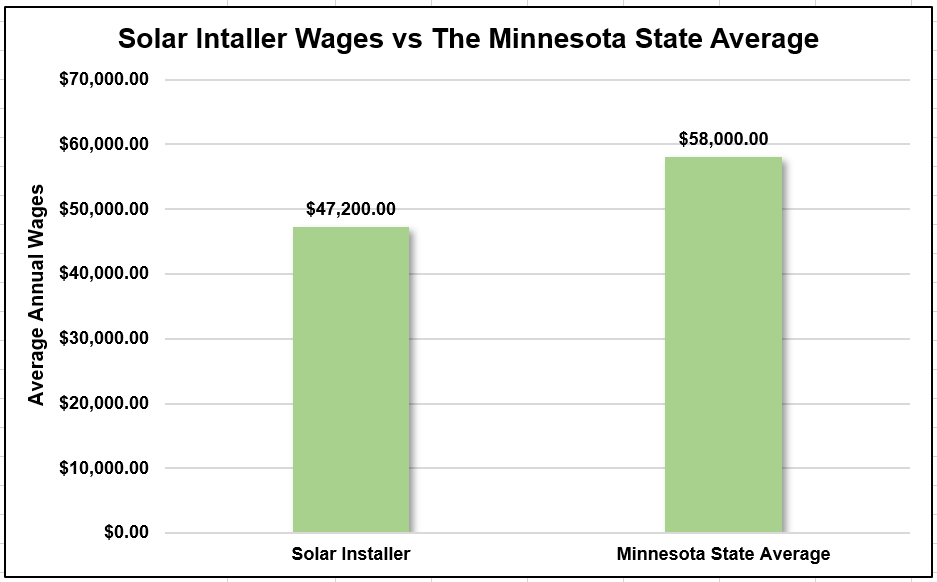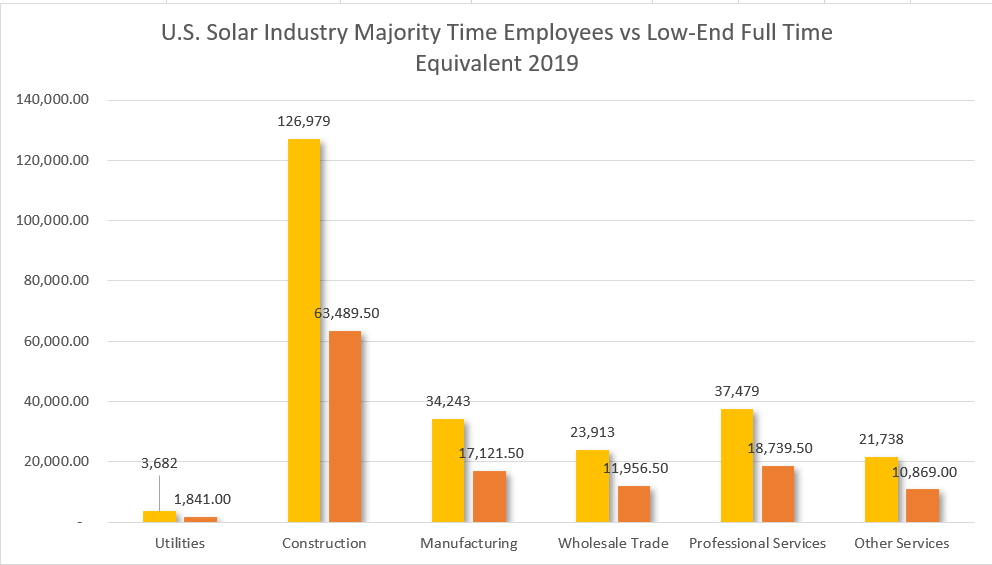Jobs Report Calls Quality, Quantity of Solar Jobs Into Question
Renewable energy advocates often claim that subsidizing and mandating wind and solar will produce long-term job benefits, but the newly-released 2020 U.S. Energy and Employment Report contains data that calls into question the quality and quantity of solar jobs in the United States.
Quality of Solar Jobs
The U.S. Energy and Employment Report data show that a majority of workers in the solar industry are in the construction sector, which includes solar installation technicians. These jobs are temporary in nature, and are largely dependent upon state mandates and federal subsidies, along with utility profit-seeking, to generate demand for solar installations.

Another report by the same firm gives us a look at the wages paid for these jobs. According to this report, the average wage for a solar installer in the state of Minnesota in 2018 was $22.69 per hour, or approximately $47,200 per year if we assume they work 40 hours per week, 52 weeks per year. This wage is $10,800, or approximately 18.6 percent, less than the average wage paid in Minnesota.

This is not meant to disparage the workers in the solar construction industry, or to say these are not well-paying jobs. However, those who promote renewable energy mandates rarely talk about the temporary nature of these jobs, or put the wages paid by these jobs into proper context. These factors are crucial for policymakers to understand.
Quantity of Solar Jobs
The U.S. Energy and Employment Report states that there are 248,034 majority-time workers in the solar energy industry, meaning these workers spend at least 50 percent of their time working in the solar industry. It is important for people to understand that these numbers are different than all of the other numbers presented in the report, which are reported as full time jobs.
The reporting system for solar is problematic because it does not present an apples-to-apples comparison for other industries. A more appropriate way to report solar jobs would be in terms of the number of full-time-equivalent jobs created. This method of reporting would ensure that solar jobs are not over represented, as the current job reporting method could be effectively doubling the number of full time equivalent jobs in the solar industry if each of these employees spent only 50 percent of their time in the solar industry, as you can see below.

The most likely scenario is that the number of full-time equivalent jobs created by the U.S. solar industry is somewhere in between these ranges, with the yellow bar being the high end, and the orange bar representing the low end. This same methodology is applied to the state level jobs reports developed by this firm, meaning that it is important for lawmakers to understand that they are being presented with the highest-possible jobs numbers for the solar industry.
Conclusion
The jobs numbers presented in the U.S. Energy and Employment Report 2020 very likely overstate the number of jobs created by the solar industry. Furthermore, most of the jobs that are created are temporary construction jobs that pay less than the Minnesota state average.